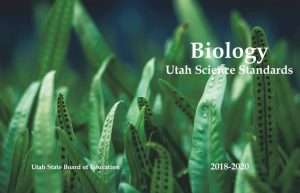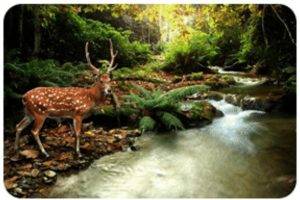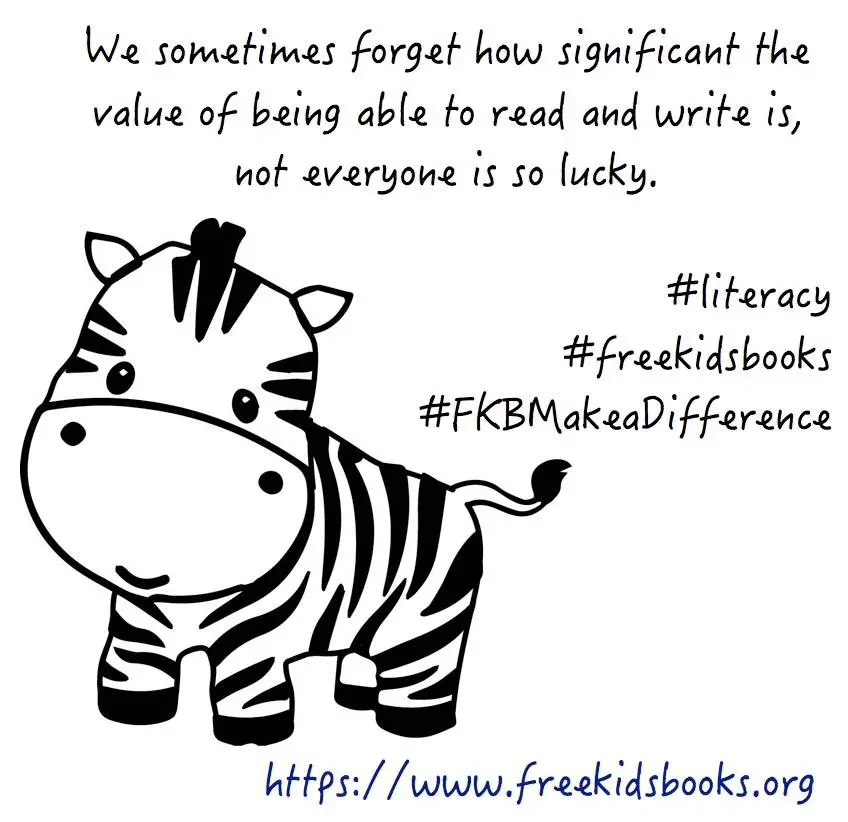 This high school Biology textbook is an Open Educational Resource (OER) textbook written specifically for students to have a reputable source for them to obtain materials and information aligned to the Utah school biology curriculum. The hope is that teachers use these resources for their students, as they keep records and suggestions on how to improve this amazing biology open textbook. The book is revised every year, based on teachers feedback and new objectives on improving the book.
This high school Biology textbook is an Open Educational Resource (OER) textbook written specifically for students to have a reputable source for them to obtain materials and information aligned to the Utah school biology curriculum. The hope is that teachers use these resources for their students, as they keep records and suggestions on how to improve this amazing biology open textbook. The book is revised every year, based on teachers feedback and new objectives on improving the book.
Utah’s first OER project was science. USBE has been working with science for over several years. UEN recognizes the support of the Hewlett Foundation, the CK12 Foundation, and Brigham Young University in development of these materials. Visit the Science Activities webpage to view all of the Online Interactive Activities that are included in each textbook.
This textbook is licensed CC-BY-NC, providing open educational content for high school biology.
The majority of content was created from CK-12 flexbooks project, http://www.ck12.org/saythanks – Thanks!
See more content from Utah Education Network in our UEN Publisher category.
Biology High School Textbook – Table of Contents
CHAPTER 1 ……………………………………………………………………………………………………13
1.1 Flow of Energy……………………………………………………………………………………………..16
Food Chains and Food Webs: Who’s eating whom? …………………………………………………..19
Energy Pyramids: Why do we have more warthogs than cheetahs?……………………………….22
Energy: Is it worth it? ………………………………………………………………………………………..24
Humans and Food: Where does my food come from? ……………………………………………….27
1.2 Matter Cycles and Organisms………………………………………………………………………….28
The Carbon Cycle: What do I and Campfire Smoke have in Common?…………………………..32
The Nitrogen Cycle: Why do we use fertilizers? ……………………………………………………….35
The Oxygen Cycle: How do I cycle oxygen?…………………………………………………………….38
Limiting Factors and Population Growth: How many mice can I fit in my pocket? …………….40
1.3 Ecosystems ………………………………………………………………………………………………..42
How do interactions among organisms and their environment help shape
ecosystems? ……………………………………………………………………………………………………42
Predator-Prey: Who’s in charge here?…………………………………………………………………….45
Competition: Does there have to be a winner? ………………………………………………………..48
CHAPTER 2 ……………………………………………………………………………………………………50
2.1 Components of Matter ………………………………………………………………………………….53
What are you made of?………………………………………………………………………………………53
Macromolecules: Are You What You Eat?………………………………………………………………..55
Water: Why do we really need it?………………………………………………………………………….60
Properties of Water: What makes it so special? ………………………………………………………..61
Enzymes and Chemical Reactions…………………………………………………………………………..63
2.2 How Do Organisms Obtain Energy ……………………………………………………………………67
Autotroph vs. Heterotroph: How Organisms Obtain Energy…………………………………………..68
Photosynthesis: How do plants make food? ……………………………………………………………..70
Oxygen: An Essential Byproduct ……………………………………………………………………………72
Cellular Respiration: How do your cells get energy?……………………………………………………74
2.3 Introduction to Cells ……………………………………………………………………………………..76
How were cells discovered?…………………………………………………………………………………..76
Cell Structure: What are Cells Made of?……………………………………………………………………79
11
The Cell Cycle: How Do You Grow?…………………………………………………………………………84
Transport: How do materials get into and out of a cell? ………………………………………………88
CHAPTER 3 ……………………………………………………………………………………………………..94
3.1 Organization of Living Things……………………………………………………………………………96
Levels of Organization …………………………………………………………………………………………96
The Skeletal System…………………………………………………………………………………………….99
Muscular System ………………………………………………………………………………………………..101
Integumentary System: What is the largest organ in your body? ……………………………………103
Nervous System: How does it work so fast?……………………………………………………………….107
Circulatory System: How do materials move around my body?……………………………………….109
Respiratory System: How does the rest of my body get oxygen?…………………………………….113
Digestive System: How does my body get rid of waste?………………………………………………..115
Excretory System…………………………………………………………………………………………………117
Lymphatic System ……………………………………………………………………………………………….118
Reproductive Systems:………………………………………………………………………………………….119
3.2 Comparing Organ Systems ……………………………………………………………………………….120
3.3 Plant Tissue and Growth ………………………………………………………………………………….124
Plant organs: What are Roots, Stems, Leaves, and Flowers?…………………………………………..126
CHAPTER 4 ………………………………………………………………………………………………………135
4.1 Reproduction …………………………………………………………………………………………………138
Reproduction: One Parent or Two? ………………………………………………………………………….138
Do you have ALL your parents’ genetic material?…………………………………………………………141
4.2 Inheritance Patterns ……………………………………………………………………………………….146
How did Mendel experiment with peas?…………………………………………………………………….146
Ethical, Legal and Social Issues: Right or Wrong? ……………………………………………………….157
4.3 Mendelian Genetics ………………………………………………………………………………………..159
Mendelian Genetics ……………………………………………………………………………………………..159
4.4 DNA…………………………………………………………………………………………………………….166
Is my DNA the Same as My Mother’s?………………………………………………………………………166
RNA: How is it related to DNA?……………………………………………………………………………….173
Mutations: Can my DNA change? ……………………………………………………………………………177
CHAPTER 5 ……………………………………………………………………………………………………….183
12
5.1 Evidence of Evolution ……………………………………………………………………………………..186
When did life on Earth appear?……………………………………………………………………………….186
Fossils: What can fossils tell us about the past……………………………………………………………188
Natural Selection: How Did Darwin Discover Natural Selection? ……………………………………..191
Evidence: How is Evolution Supported by Evidence?…………………………………………………….199
5.2 How Does Evolution Happen …………………………………………………………………………….206
Speciation: What Causes Speciation?………………………………………………………………………..211
5.3 Classification of Living Things ……………………………………………………………………………215
How do we classify living things? …………………………………………………………………………….215
Mass Extinction: How has classification changed?………………………………………………………..226
Sample Biology – Open Educational Resource
1.1 Flow of Energy How Does Energy Flow Through an Ecosystem?
Am I all alone? Do organisms live in isolation? No, organisms are not separated from their environment or from other organisms. They interact in many ways with their surroundings.
 For example, this deer may be drinking from this stream or eating nearby plants. Ecology is the study of living (biotic) and nonliving (abiotic) interactions in an environment. All organisms have the ability to grow and reproduce. To grow and reproduce, organisms must get materials and energy from the environment. Plants obtain their energy from the sun through photosynthesis, whereas animals obtain their energy from other organisms. Either way, these plants and animals, as well as bacteria and fungi, are constantly interacting with other species as well as the nonliving parts of their ecosystem (the interaction of all of the living and nonliving parts of a community). An organism’s environment includes two types of factors:
For example, this deer may be drinking from this stream or eating nearby plants. Ecology is the study of living (biotic) and nonliving (abiotic) interactions in an environment. All organisms have the ability to grow and reproduce. To grow and reproduce, organisms must get materials and energy from the environment. Plants obtain their energy from the sun through photosynthesis, whereas animals obtain their energy from other organisms. Either way, these plants and animals, as well as bacteria and fungi, are constantly interacting with other species as well as the nonliving parts of their ecosystem (the interaction of all of the living and nonliving parts of a community). An organism’s environment includes two types of factors:
• Abiotic factors are the parts of the environment that are not living, such as sunlight, climate, soil, water, and air.
• Biotic factors are the parts of the environment that are alive, or were alive and then died, such as plants, animals, and their remains. Biotic factors also include bacteria, fungi and protists. Ecology studies the interactions between biotic factors, such as organisms like plants and animals, and abiotic factors. For example, all animals (biotic factors) breathe in oxygen (abiotic factor). All plants (biotic factor) absorb carbon dioxide (abiotic factor) and need water (abiotic factor) to survive.
• Ecosystems can be studied at small levels or at large levels. The levels of organization are described below from the smallest to the largest: 17
• Individuals are members of the same species (a group of individuals who are genetically related and can breed to produce fertile offspring), if their members cannot produce offspring that can also have children. The second word in the two-word specific name given to every organism is the species name. For example, in Homo sapiens, sapiens is the species name and Homo is the genus.
• A population is a group of organisms belonging to the same species that live in the same area and interact with one another.
• A community is all of the populations of different species that live in the same area and interact with one another.
• An ecosystem includes the living (biotic) organisms (all the populations) in an area and the non-living (abiotic) aspects of the environment and their interactions.
• The biosphere in the figure below, is the highest level of ecological organization. It is the part of the earth, including the air, land, surface rocks, and water, where life is found and includes almost all of the Earth. Parts of the lithosphere, hydrosphere, and atmosphere make up the biosphere.
<end of sample>
See more Books under Science Category Below
[display-posts category=”Science” include_excerpt=”true” image_size=”thumbnail” wrapper=”div” wrapper_class=”display-posts-listing grid” meta_key=”_thumbnail_id”]
See more Textbooks Below
[display-posts category=”School Textbooks” include_excerpt=”true” image_size=”thumbnail” wrapper=”div” wrapper_class=”display-posts-listing grid” meta_key=”_thumbnail_id”]
Sponsored Links:
Note – if you sign up through these links, it doesn’t cost you any extra, but FKB receives a small donation, which helps us move towards our aim of
FREE Hardcopies!
All our posts are checked by Grammarly, the FREE online grammar checker (We still receive a donation even if you only sign up for the free account :-):

This site is hosted by Bluehost:

Leave a comment (it won’t be public) if you want help getting your own website cost-effectively.











